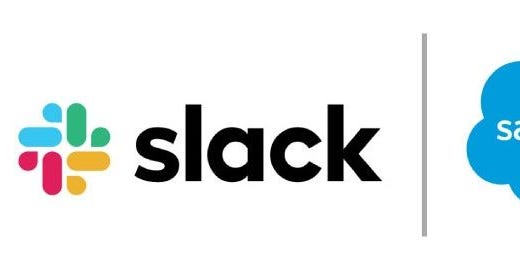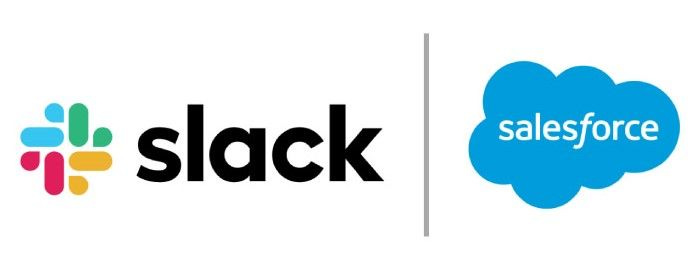Salesforce's Strategic Acquisition of Slack: A Response to Growing SaaS Demand
Overview through Salesforce acquisition of Slack
Companies Overview (Salesforce and Slack Pre-Merger):
Salesforce, Inc., founded in 1999 by Marc Benioff and headquartered in San Francisco, is a leading player in customer relationship management (CRM) and cloud-based solutions. The company pioneered the SaaS (Software-as-a-Service) model, enabling organizations to manage customer interactions, sales, and data through a web-based platform. Over the years, Salesforce has expanded its services beyond CRM to include analytics, marketing automation, artificial intelligence, and e-commerce, consolidating its reputation as an all-in-one business platform. With key segments in Sales Cloud, Service Cloud, Marketing Cloud, and Analytics, Salesforce has established itself as the go-to solution for businesses seeking a seamless, integrated platform for customer and business data.
Slack Technologies, Inc., founded in 2009 by Stewart Butterfield, emerged as a leader in workplace collaboration tools. Headquartered in San Francisco, Slack began as a messaging tool that offered teams an alternative to email, allowing them to collaborate more effectively through channels organized by topic, project, or team. The platform integrates with numerous productivity and business applications, streamlining workflows and promoting real-time communication. Slack's business model is centered on a freemium subscription approach, appealing to enterprises and small-to-medium businesses (SMBs) looking to improve team communication and coordination. By 2020, Slack had positioned itself as a pivotal tool for remote work, addressing the increasing demand for digital collaboration.
Salesforce's decision to acquire Slack, announced in December 2020, represented a strategic move to strengthen its ecosystem by integrating an advanced collaboration platform into its extensive suite of cloud products. The acquisition combined Salesforce’s CRM capabilities with Slack’s communication and workflow tools, aiming to create a “digital HQ” where businesses could manage customer relations, project tasks, and team communication from a single, integrated platform.
Industry and Market Analysis (Pre-Merger Environment):
The SaaS and cloud software industry has experienced significant growth, driven by increased digitization, remote work adoption, and demand for flexible, scalable solutions. Companies across various sectors have invested in cloud solutions to optimize processes, improve customer experiences, and enhance team collaboration, especially in the wake of the COVID-19 pandemic. SaaS companies benefit from subscription-based revenue models, creating predictable revenue streams and high customer retention.
Salesforce’s Position in the CRM Market
The CRM market is highly competitive, with major players like Microsoft Dynamics, Oracle, SAP, and HubSpot competing alongside Salesforce. The sector has seen consistent growth, projected to surpass $90 billion by 2028, driven by businesses seeking ways to deepen customer relationships, leverage data-driven insights, and gain a competitive advantage. Salesforce has maintained its dominance by continuously innovating and adding new functionalities to its platform, capturing nearly 20% of the global CRM market. The company’s success lies in its ability to anticipate business needs, expand its product suite, and facilitate an integrated cloud environment.
The rise of data-driven decision-making and the shift towards digital-first strategies have positioned CRM as a vital tool in modern business operations. Customers demand seamless, personalized experiences, pushing companies to invest heavily in customer management and engagement technologies. Salesforce’s ability to integrate AI through its Einstein Analytics platform and its focus on tailored, industry-specific CRM solutions have further cemented its leadership position.
Slack’s Position in the Collaboration and Communication Market
The collaboration software market has also seen remarkable growth, driven by remote work trends, digital transformation, and the need for efficient internal communication tools. With competitors like Microsoft Teams, Google Workspace, and Zoom, Slack operated in a competitive environment but maintained a strong user base due to its focus on integrations, ease of use, and enterprise-grade security.
As of 2020, Slack had over 12 million daily active users and integrated with over 2,000 third-party applications, allowing businesses to create tailored workflows. The collaboration software market, valued at approximately $10 billion, was projected to grow significantly in the coming years. However, Slack faced stiff competition from Microsoft Teams, which benefited from being bundled with Microsoft 365, thus reaching a broader audience. Despite the competition, Slack’s open API and integration capabilities enabled it to remain a popular choice for companies looking to streamline workflows across multiple tools.
Strategic Position and Rationale for the Merger
Salesforce’s acquisition of Slack aligned with its strategy to expand beyond CRM and become an all-encompassing platform for business productivity. Recognizing the shift towards hybrid work environments, Salesforce aimed to provide a “digital HQ” by integrating Slack into its suite, allowing businesses to manage customer interactions and internal communications seamlessly. Slack’s collaboration capabilities complemented Salesforce’s data management, AI, and analytics tools, making it a natural fit for Salesforce’s long-term goals of enabling comprehensive digital transformation for enterprises.
Benefits of the Merger:
The Salesforce-Slack merger promised several strategic and operational benefits, both in terms of market positioning and enhanced product offerings.
Creation of a “Digital HQ”: The integration of Slack into Salesforce’s platform enabled the creation of a unified, digital workspace for both internal and external collaboration. Through Slack, Salesforce could provide organizations with a centralized communication hub for teams to discuss projects, access customer data, and engage in decision-making, streamlining workflows and reducing the need for switching between applications. This synergy aligned well with Salesforce’s vision of supporting digital-first businesses, catering to the growing demand for remote and hybrid work solutions.
Competitive Advantage Against Microsoft and Other Rivals: The merger strengthened Salesforce’s position against rivals like Microsoft, Oracle, and SAP. By integrating Slack, Salesforce could compete more effectively with Microsoft Teams, offering a similar communication and collaboration tool while avoiding the limitations of bundling. Slack’s flexible integrations gave Salesforce an edge, as users could continue to connect Salesforce’s tools with a vast array of other software platforms, providing greater flexibility than Microsoft’s relatively closed ecosystem.
Enhanced Cross-Functional Workflows: The merger allowed Salesforce to expand beyond customer-facing applications and improve internal operational efficiency. Slack channels could be used to coordinate sales, marketing, service, and IT functions, while leveraging Salesforce’s data-driven insights. This improved cross-functional collaboration helped businesses operate more efficiently, enabling faster decision-making and better alignment across departments.
Access to Expanded Customer Base: The merger also provided Salesforce with access to Slack’s customer base, many of whom were high-growth technology and SMB clients. This complemented Salesforce’s existing enterprise-focused customer base, enabling cross-selling opportunities and providing an additional revenue stream. By integrating Slack’s tools into its CRM offerings, Salesforce could attract companies looking for a seamless communication platform that also enhances customer engagement.
Data and AI Integration Potential: Salesforce’s advanced AI capabilities, particularly through Einstein Analytics, could enhance Slack’s functionalities, allowing companies to access AI-driven insights within Slack. This integration enabled sales, customer service, and marketing teams to receive real-time customer insights, predictive analytics, and recommendations, improving customer engagement and retention. For example, a sales team could receive alerts on potential customer issues directly in Slack, fostering proactive responses and enhancing customer satisfaction.
Increase in Market Reach and Innovation Capabilities: The merger expanded Salesforce’s reach in the rapidly growing collaboration software market, positioning it for leadership in the remote work landscape. With Slack as part of its ecosystem, Salesforce could innovate faster, integrating new functionalities such as project management tools, advanced AI, and industry-specific collaboration features tailored to sectors like healthcare, finance, and manufacturing.
Salesforce’s acquisition of Slack was a strategic response to the evolving demands of a digital-first economy, where hybrid work and real-time collaboration have become fundamental to business success. By combining Salesforce’s CRM and data capabilities with Slack’s powerful collaboration tools, the merger promised to redefine how organizations communicate internally and engage with customers. It positioned Salesforce as a comprehensive solution for companies seeking a single, integrated platform to manage both customer relationships and team productivity, offering a competitive edge in an increasingly digital, remote work-driven world.
Salesforce’s Acquisition of Slack
The acquisition of Slack by Salesforce was a highly strategic move, aimed at meeting the rising demand in the digital industry, particularly for Software as a Service (SaaS) solutions. During the COVID-19 pandemic, companies offering SaaS solutions saw significant demand from both major tech corporations and entrepreneurs seeking to optimize their operations for remote work. This digital transformation greatly benefited companies like Salesforce and Slack, driving their revenues upward amid an evolving market landscape.
Before the acquisition, Salesforce’s CRM-focused SaaS offerings addressed customer relationship management but didn’t fully meet the growing need for comprehensive communication and collaboration tools, especially as hybrid work became a standard. To address this gap, Salesforce acquired Slack in July 2021 for almost $28 billion, primarily through stock with a minor cash component. This acquisition enabled Salesforce to extend its services and address the rapid growth in demand for SaaS tools.
Synergies and Financial Impact
The Slack acquisition brought about notable cost savings and revenue synergies worth approximately $2 billion—a substantial synergy figure in M&A deals of this scale. Salesforce paid a 55% premium on Slack’s stock price, and to assess the impact of varying premiums on post-merger earnings, I analyzed two additional scenarios with premiums of 40% and 70%.
Base Case (55% Premium): Resulted in a 34% accretion to EPS, adding about $0.89—a notable increase without factoring in non-financial synergies.
40% Premium: Produced a similar 34% accretion with a slightly higher EPS accretion of $0.92.
70% Premium: Yielded a 33% EPS accretion at $0.87, showing that lower premiums could further boost post-merger EPS.
While a lower premium would have slightly improved EPS accretion, the 55% premium offered in the base case still achieved a strong 34% accretion, underscoring the strategic value of this acquisition.
Conclusion
The Salesforce-Slack deal was a sound strategic decision by Salesforce to expand its SaaS offerings, enhance its CRM services, and meet the growing demand in the SaaS industry. This acquisition has positioned Salesforce to better support hybrid work environments and optimize collaboration for clients in the digital age.
Sources:
Yahoo Finance
Salesforce 10-Ks
Slack 10-Ks








